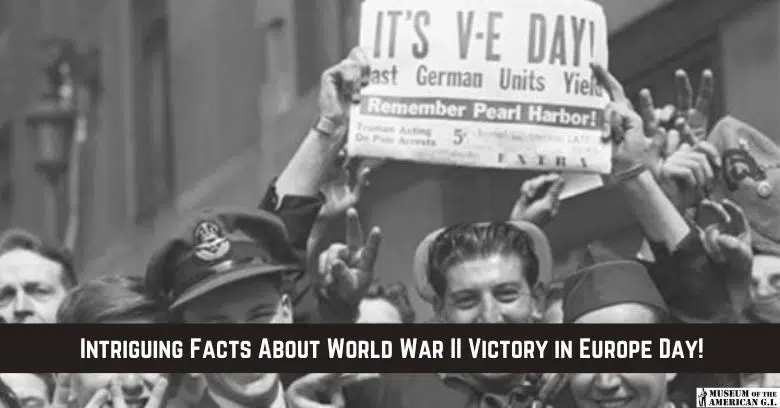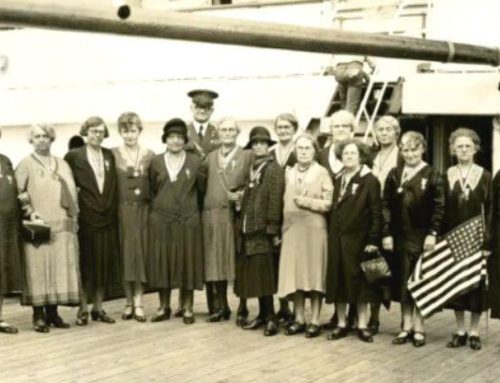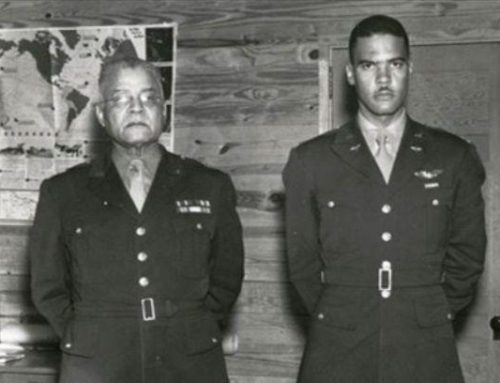Intriguing Facts About World War II Victory in Europe Day!
The ending of World War II was a momentous day throughout Europe and the world.
Although the final battles in the Pacific theater would not be over until months later, the German Army surrendered on May 7th and on May 8th, 1945, the final document of surrender was signed and the brutal war in Europe finally came to an end.
This day is now commemorated in the United States and the United Kingdom as Victory in Europe or V-E Day.
Hitler’s Death and the Defeat of Germany
The suicide death of Adolf Hitler on April 30, 1945, was a moment that signified the final days of World War II.
Without its leader, Germany was led by Hitler’s successor, Admiral Karl Dönitz, who unconditionally surrendered to the Allied forces on May 4th.
The document of surrender, which had taken a British secretary nearly 2 days to draft to the approval of the officials present, was eventually signed in Reims, France on May 7, 1945 by General Alfred Jodl, Chief of Staff of the German Army, in the presence of four allied representatives, one each from France, Great Britain, the United States, and the Soviet Union.
Upon notification of this momentous event, General Dwight Eisenhower, Supreme Allied Commander, drafted a message to release the news to the masses.
Though he had not attended the signing of the surrender document because he refused to meet with the Germans until the surrender had been concluded, he did announce the end of the war shortly after receiving confirmation that the documents had been signed.
He publicly announced from his headquarters in Reims, France the end of six years of conflict, stating the date and time as 02:41 local time on May 7, 1945, after which celebrations began throughout the United States and Europe as the word spread.
The End of WWII Involved Two Surrenders and Three Days
Although Europe was already celebrating on May 7th, when Soviet leader Joseph Stalin learned of the signing of the surrender, he was not satisfied with the original signing.
With half of Europe celebrating the end of World War II as early as May 7th yet fighting still ongoing on the eastern front between the Germans and Russians, arrangements were quickly made to draft a second surrender document, which Stalin approved.
Wanting the Act of Military Surrender to be signed in Berlin to make it “official,” a second signing was held with the updated Surrender document in Berlin on May 8th, 1945 and it was already May 9th in the Soviet Union when Russian citizens learned of the surrender.
A Great Birthday Present for A New President
In addition to May 8th being accepted as the end of World War II upon signing of the second surrender document, it was also President Harry Truman’s 61st birthday.
He had only been in office for 26 days by that point, having replaced President Franklin D. Roosevelt, who had died unexpectedly of a cerebral hemorrhage on April 12, 1945.
Though Truman was overjoyed to hear the news of Germany’s surrender, he dedicated the victory to Roosevelt and insisted that American flags remain at half-staff for the full 30 days of mourning after Roosevelt’s death, regardless of the celebration of the war ending.
He dedicated May 8th not only for the victory over Germany, but also as a remembrance of FDR and his contribution to the Allied victory.
An Anticipated Day of Celebration
Although the term Victory in Europe had already been coined in anticipation of the day that victory over the Germans would eventually occur and used as early as September of 1944, it was not until May 8, 1945 that it became official.
Now many nations in Europe as well as the United States and other parts of the world commemorate May 8th as the official Victory in Europe or V-E Day.





